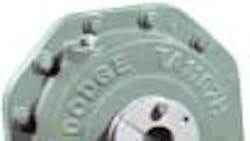Electric motors consume more than 60% of the total industry energy demand, but it’s not enough to stop there when addressing energy efficiency. Motor heat conservation measures are all in vain if energy is then wasted in the gear or belt drive. With energy shortages threatening the U.S., it’s more important than ever to consider operating efficiency when selecting a mechanical drive system, but still strike a balance between initial purchase price, operating costs, maintenance costs, and mounting space requirements.
Motors matter, but so do gears
It’s not always obvious, but gearing is a primary element in determining total system efficiency. The three basic types of gearing most commonly found in industrial gear drives are helical, bevel, and worm gearing. When analyzing operating efficiency, look to the mesh. Helicals usually rate high because meshing helical gears roll against each other with minimal friction. Bevel gear drives, with their right angle shaft configurations, are also highly efficient because meshing bevel gears also have a rolling action. Worm gear drives too have right angle shaft configurations; however, they are not as efficient because the worm gear mesh is primarily a sliding action involving high friction. To help bridge the gaps, hybrid combinations, such as worm-helical, are employed to meet various application needs, such as shaft orientations or high reduction ratios and operating efficiency.
Of course, purchase decisions aren’t made on efficiency factors alone. Worm gear drives generally have the lowest initial cost of commonly available industrial drives, and offer high reduction ratios in a compact drive package. They are economical to maintain but can be costly to operate. Worm-helical drives also experience inefficiencies. Helical-bevel drives, on the other hand, have a right-angle configuration, are efficient, and offer high reduction ratios. However, they may require more mounting space than worm right-angle drives.
Cinching belt loss
Drive efficiency is related to the ability to transmit energy from the prime mover to the driven equipment. Higher efficiency means less energy loss. In belt drives, energy is lost in the form of heat due mainly to bending, flexing, and slipping.
Standard V-belts have the greatest resistance to bending and thus produce the largest amount of heat. Cogged Vbelts have less resistance to bending and produce less heat. Simply switching from a standard V-belt to a cogged V-belt increases efficiency by about 2 percent. Synchronous belts, by nature of their teeth, also feature a cogged design. And, because they are thinner than V-belts, they produce even less heat.
Typical efficiency for a V-belt is 93%, while synchronous belts are approximately 98 percent efficient. Although in most cases synchronous drives offer energy savings over V-belt drives, all aspects of the drive should be considered before making the decision to switch. There are certain benefits and drawbacks for each type of drive. System designers often set V-belt drives for a certain amount of slip as a means of handling torque spikes and isolating valuable equipment. Should a torque spike occur, possibly at start-up, and the torque capacity of the belt be exceeded, a V-belt would slip, preventing torque transfer to other equipment. A synchronous belt, on the other hand, might fail in this situation, causing the teeth to shear off. V-belts generally last longer than synchronous belts, on the other hand, synchronous belts often operate at a much lower static tension, which can lead to longer bearing service life. Synchronous belts also require less maintenance than V-belts.
Source: Rockwell Automation, Greenville, S.C.
